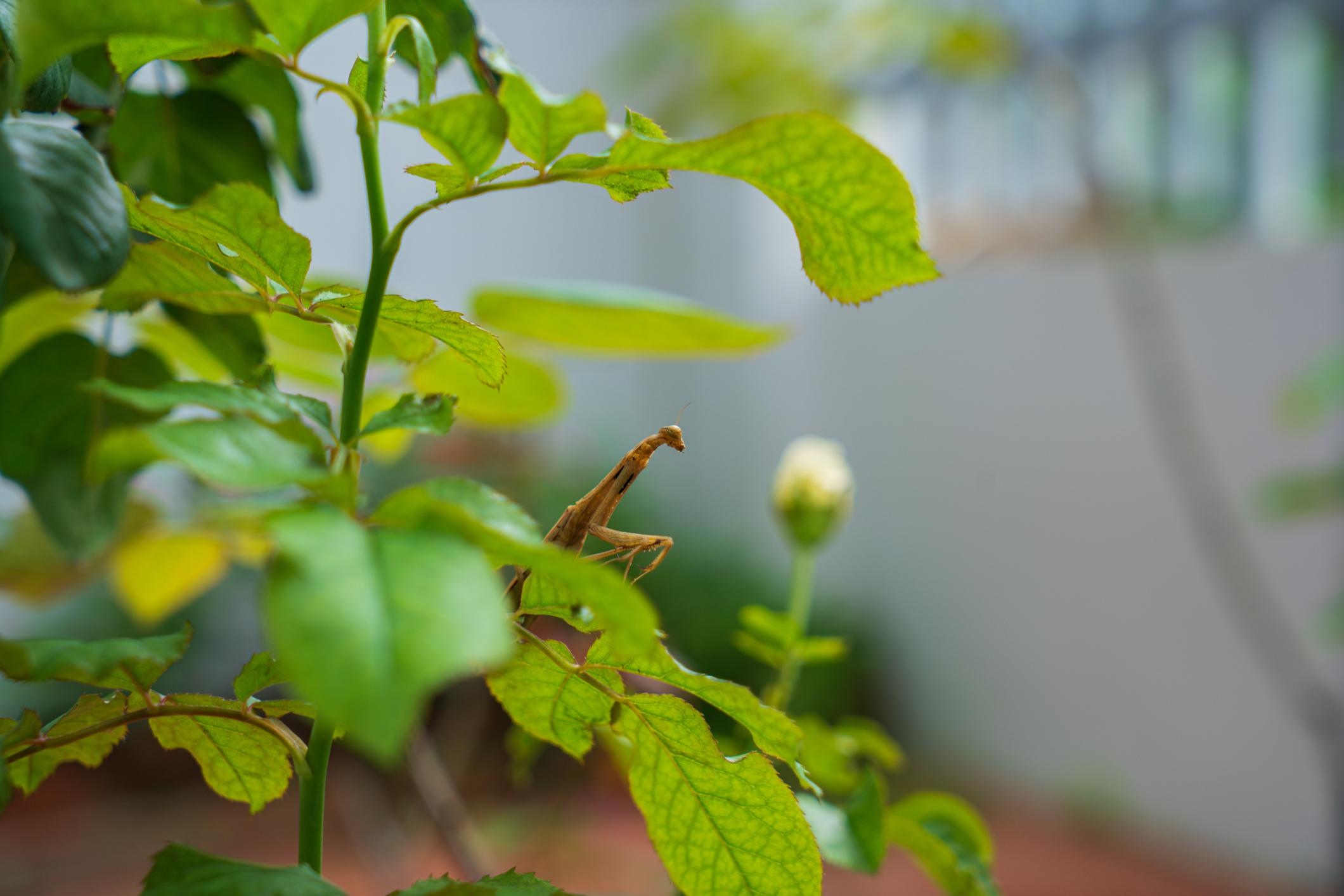Beneficial Bugs to Have in Your Garden
Posted by Mosquito Squad
April 9, 2025

Author: Emma Grace Crumbley, Entomologist
Looking for a spring garden hack? Let nature be your guide! While infestations of pests like mosquitoes and ticks require help from pest control professionals, like the highly trained technicians at Mosquito Squad Plus, garden pests can be dealt with by bugs themselves! Beneficial insects are predatory bugs that feed on insects that cause agricultural or aesthetic damage. While you’re prepping your flower beds and garden plots, be on the lookout for these beneficial bugs!
Praying Mantids
Possibly the most iconic beneficial insect, praying mantids are adept at catching and controlling several garden pests. Roaches, spiders, mosquitoes, flies, crickets, and wasps are just a few examples of the pests a praying mantis will catch and completely devour.
To promote praying mantids, consider:
- Planting ground cover plants. Praying mantids use ground cover plants like grasses and herbs to help hide themselves as they hunt for prey. Consider adding these plants around your outdoor spaces.
- Protecting praying mantis egg cases. Praying mantids lay their eggs in egg cases that look like small, hardened foam balls (sort of like spray foam insulation). These egg cases can contain hundreds of praying mantis nymphs, so keeping them protected and leaving them in your yard will help increase the praying mantis population at your disposal!
- Moving birdhouses and hummingbird feeders away from mantid resting sites. Sometimes praying mantids are a little too good at hunting and can catch and eat small birds. Move birdhouses and feeders away from gardens and dense foliage to encourage the mantids in your yard to eat insect pests instead of birds.
Lacewings
Lacewings are a type of net-winged insect found throughout the US. Though much smaller than praying mantids, lacewings are active hunters of small, soft-bodied insects. They can control thrips, spider mites, mealybugs, and leafhoppers.
To promote lacewings, consider:
- Planting lacewing host plants. Several herbs, such as cilantro, dill, and fennel, have been shown to be attractive to both green and brown lacewings. These plants can spruce up your outdoor spaces and attract more beneficial bugs!
- Protecting flowering plants. Adult lacewings feed mostly on the nectar produced by flowering plants. Keep a variety of native flowering plants growing in your backyard and keep them healthy throughout the warm seasons.
- Adding a bug-friendly water source. These insects, along with other beneficial bugs on this list, require a water source to stay hydrated. To create a bug-friendly watering spot, fill a shallow dish with water and add rocks and sticks to give bugs a place to rest. Remember to change the water out regularly to avoid accidentally creating a mosquito breeding ground!
Ladybugs
One of the best insects to have in your outdoor spaces is native ladybugs! In the US, there are nearly 500 unique species of ladybug native to North America, several of which can live in your backyard at once. Though their bright colors and sweet demeanor make them seem delicate and dainty, ladybugs are fierce predators of small garden pests like mites, whiteflies, scale bugs, and aphids.
To promote ladybugs, consider:
- Planting native plants. You'll notice that throughout this blog, there has been a heavy emphasis on native plants. That's because native plants not only thrive in their native environments but also attract native insects, like ladybugs, to interact with your yard. While invasive or exotic plants may give your yard a new look, native plants will attract the kinds of insects you want hanging around your garden.
- Adding flat flowers. Some flower species are easier for ladybugs to climb and walk around than others. Instead of adding plants with umbrella-shaped flowers (like sweet cicely, bishop's flower, and wild carrots), opt for plants with flatter flowers (like pansies, impatiens, or peonies).
- Creating an overwintering site. Ladybugs overwinter in leaf debris and wood piles. Creating a designated ladybug overwintering site away from the home can help support ladybug populations during colder months and encourage ladybugs to stay in your yard during spring and summer.
Pollinators
Bees, beetles, butterflies, and moths are all essential pollinators in nature and in your yard or garden. Pollinators move pollen, the genetic material of flowering plants, from one flower to another, dispersing pollen grains and assisting in plant fertilization. Without pollinators, many wildflowers, fruits, vegetables, and ornamental plants would die.
To promote pollinators, consider:
- Planting more native, flowering plants. Pollinators feed on wildflowers and flowering crops, so adding more flowers to your yard will make it more attractive to nearby bees and butterflies!
- Creating pollinator-hosting zones. Some butterfly species only lay their eggs on certain host plants, so research native butterflies to your area and plant hosting plants. This will attract butterflies and promote future generations of pollinators!
- Adding bee boxes and bug hotels. Some pollinators, like bees and native beetles, look for sheltered areas to hang out in during the day. Bee boxes and bug hotels are premade, usually wooden fixtures with holes and crevices where these insects can hang out (this helps give them a place to rest that's not your home!).
We’re Here To Help!
Take the guesswork out of pest work and call a Squad near you today! Our technicians recognize the importance of beneficial insects and pollinators and are highly trained to avoid treating flowering plants and sensitive areas of your yard. Mosquito Squad’s Essential Botanical Insecticide also provides a natural service option proven to control a variety of pests with naturally derived ingredients. Call today for a free quote! Services vary by location.
